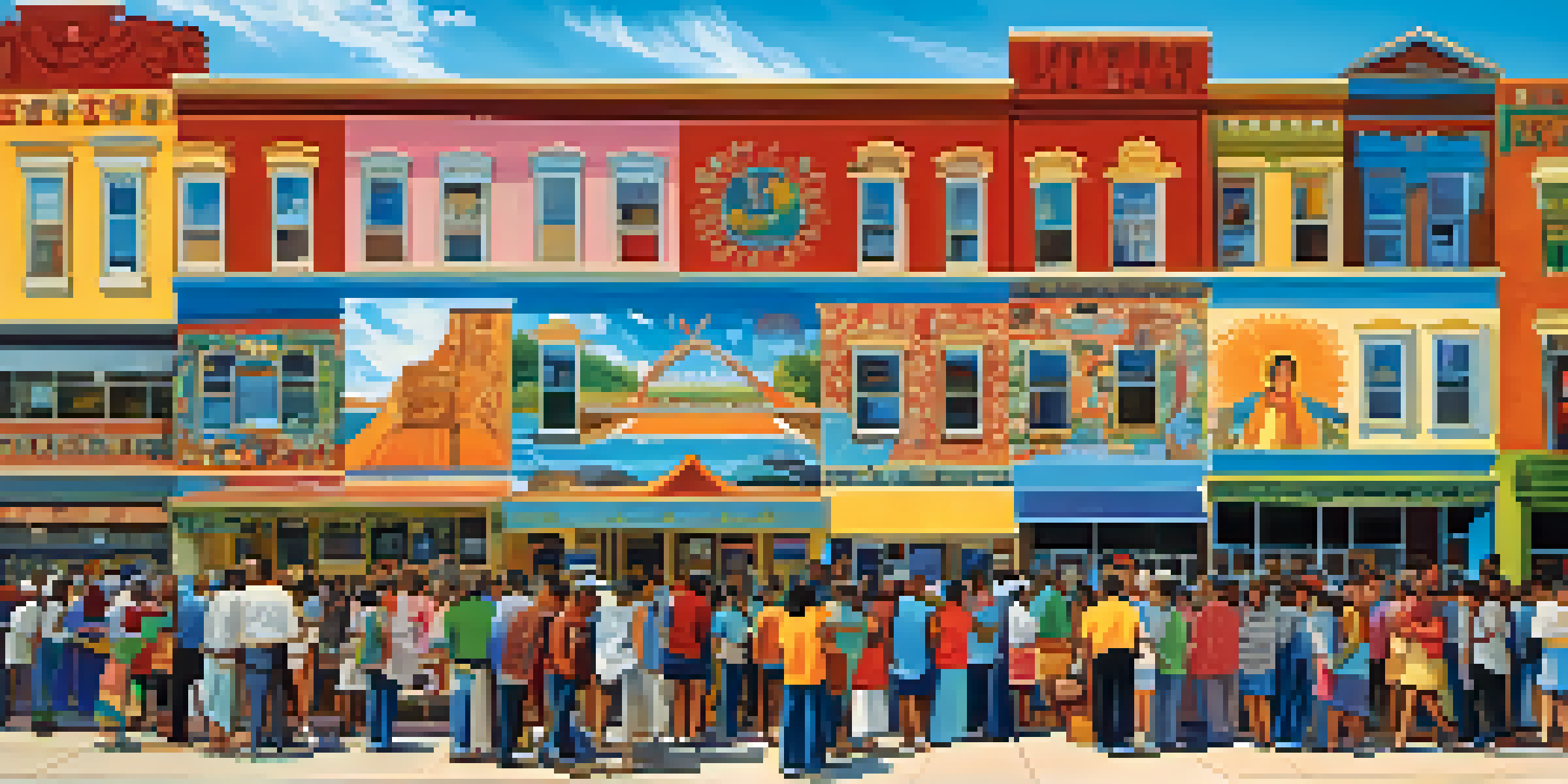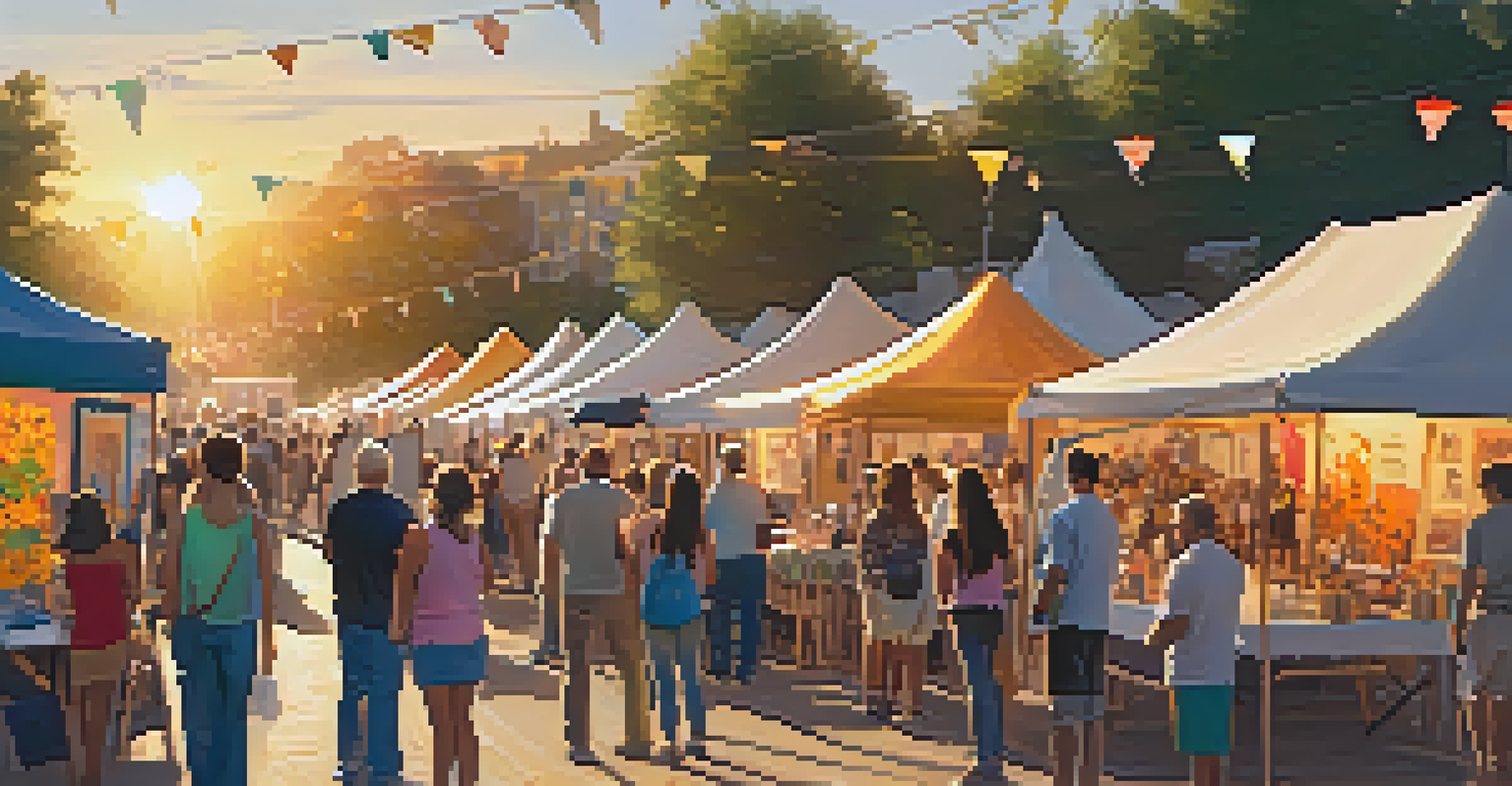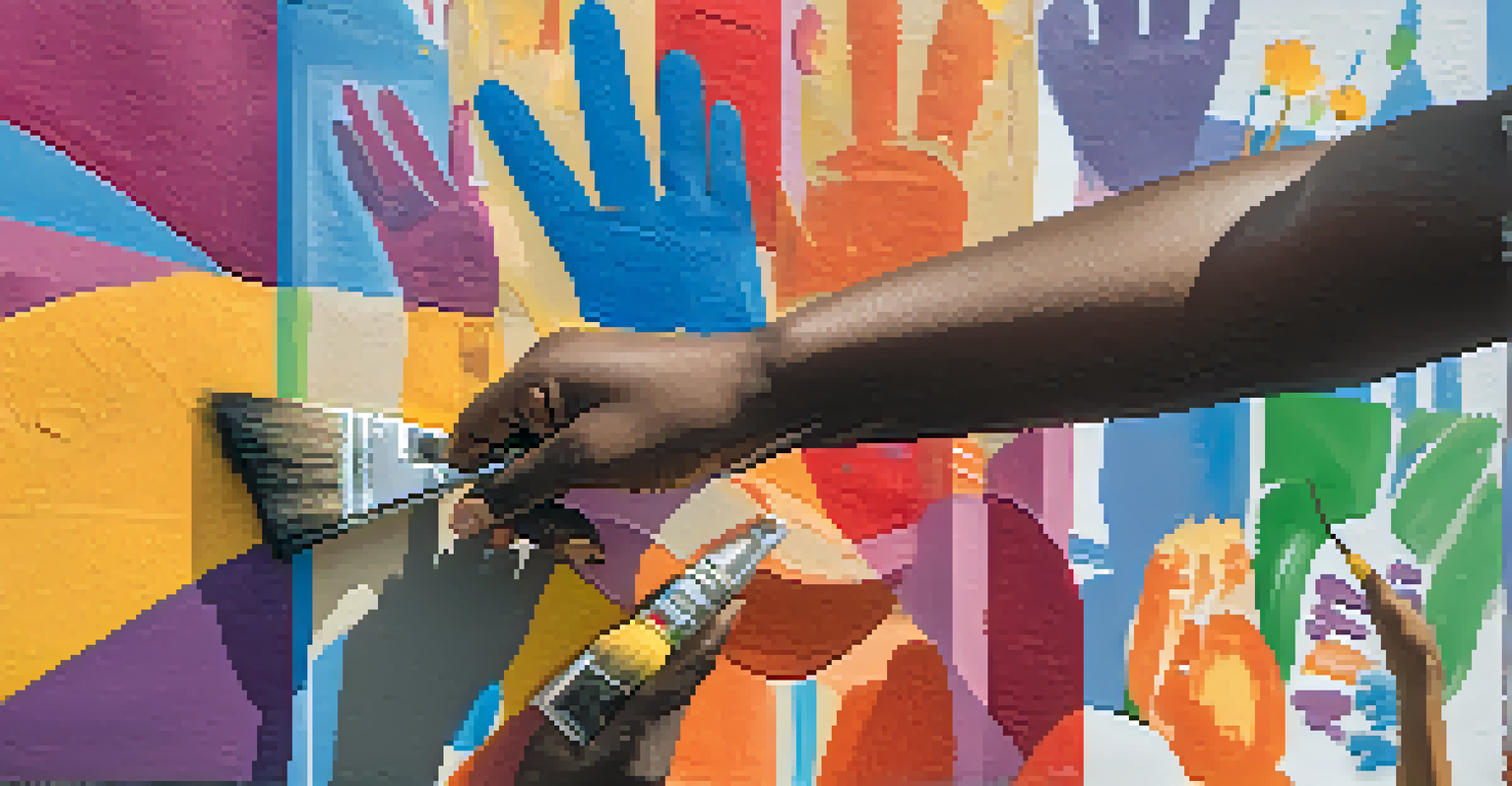The Role of Community Art in Strengthening Local Identity

Understanding Community Art and Its Importance
Community art refers to creative activities that engage local residents and reflect their culture and values. It can take many forms, from murals and sculptures to performances and workshops. These artistic expressions are not just for aesthetic pleasure; they often serve as a voice for the community, highlighting issues that matter to the people living there.
Art is the most beautiful of all lies; it is the greatest truth of all.
By participating in community art projects, residents can express their unique stories and experiences. This shared creativity fosters a sense of belonging and ownership, which is crucial for developing a strong local identity. When people see their experiences represented in public art, it cultivates pride and connection within the community.
Furthermore, community art can act as a catalyst for dialogue and collaboration among diverse groups. It encourages conversations that might not happen otherwise, helping bridge gaps in understanding and promoting inclusivity. In essence, community art provides a platform for voices that often go unheard.
How Community Art Reflects Local Culture and Heritage
One of the most profound roles of community art is its ability to reflect the local culture and heritage of an area. Artists often draw inspiration from the history, traditions, and narratives of their communities, capturing what makes a place unique. This can include everything from historical events to local legends, integrating them into public spaces.

For example, a mural depicting the history of a neighborhood can educate residents and visitors about the area’s past. It serves as a visual reminder of the shared experiences that have shaped the community. When art echoes the history and culture of a locality, it reinforces pride and a sense of belonging among residents.
Community Art Builds Local Identity
Community art engages residents by reflecting their culture and values, fostering a sense of belonging and pride.
Moreover, the inclusion of diverse cultural elements in community art can showcase the richness of a community’s identity. By highlighting various cultural backgrounds, community art promotes appreciation and respect for diversity, fostering unity among residents. This celebration of culture helps create a harmonious atmosphere where everyone feels valued.
Fostering Community Pride Through Artistic Expression
Community art projects often serve as a source of pride for local residents. When people see their community represented in a vibrant mural or a public performance, it can evoke feelings of joy and ownership. This pride is essential for motivating residents to take an active role in their community, whether through volunteering, participating in local events, or advocating for improvements.
The greatest art is the most useless.
Additionally, public art can significantly enhance the visual appeal of a neighborhood. Beautiful, engaging art can transform bland spaces into vibrant areas, attracting visitors and boosting local businesses. This transformation not only uplifts the community but also encourages residents to appreciate their surroundings more deeply.
Ultimately, the pride generated through community art can lead to stronger networks among residents. When people feel proud of their community, they are more likely to connect with one another and collaborate on future initiatives, creating a cycle of positivity and engagement that benefits everyone.
The Role of Community Art in Social Cohesion
Community art has a remarkable ability to bring people together, fostering social cohesion. When individuals from different backgrounds collaborate on art projects, they break down barriers and build relationships. This interaction creates a sense of solidarity, helping individuals see their commonalities rather than their differences.
Artistic events, such as festivals or workshops, can create opportunities for community members to meet and engage with one another. These shared experiences strengthen bonds and lay the groundwork for a supportive network. In many cases, these connections lead to lasting friendships and collaborations that extend beyond the art project itself.
Art Promotes Social Cohesion
Collaborative art projects create connections among diverse individuals, enhancing solidarity and mutual understanding.
Moreover, social cohesion through community art can lead to collective action. When residents feel united, they are more likely to come together to address local issues and advocate for necessary changes. This sense of community empowerment is crucial for creating a thriving, engaged neighborhood.
Community Art as a Tool for Education and Awareness
Community art serves not only as a creative outlet but also as a powerful educational tool. It can convey important messages about social issues, health, and environmental concerns in a way that resonates with the community. Through art, complex topics become more accessible, sparking interest and dialogue among residents.
For instance, a community mural addressing climate change can inspire conversations around sustainability and environmental responsibility. By engaging residents in these discussions, community art encourages them to take action and become informed advocates for change. This educational aspect of community art is crucial for fostering a more informed and active citizenry.
Furthermore, workshops and art classes can also provide learning opportunities for community members of all ages. These programs not only teach artistic skills but can also cover important social themes, enhancing awareness and understanding. In this way, community art becomes a catalyst for both personal and collective growth.
Promoting Economic Development Through Community Art
Community art can significantly contribute to local economic development, transforming neighborhoods into vibrant cultural destinations. When public art projects attract visitors, they also draw attention to nearby businesses. This influx of visitors can boost sales for local shops, restaurants, and services, creating a thriving economic environment.
Moreover, art festivals and events can serve as a platform for local artists to showcase their work, helping to stimulate the creative economy. These events can generate income for artists while also promoting cultural tourism—an important economic driver for many communities. Communities that invest in art often see a return on that investment through increased economic activity.
Economic Growth Through Art
Public art initiatives can attract visitors and boost local businesses, contributing to overall economic development.
Additionally, the presence of public art can increase property values, as attractive neighborhoods tend to draw more interest from homebuyers. This rise in property values can lead to further investment in the community, creating a positive feedback loop of growth and development. Ultimately, community art not only enriches culture but also lays the foundation for a sustainable economy.
Challenges and Opportunities in Community Art Projects
While community art holds immense potential, it also faces various challenges. Issues such as funding, community engagement, and securing permits can hinder the successful implementation of art projects. It’s essential for organizers to navigate these obstacles strategically to ensure that the art reflects the community's needs and aspirations.
Moreover, ensuring diverse representation in community art projects can be a challenge. It’s crucial to involve a wide range of voices, especially those from marginalized backgrounds, to create inclusive art that resonates with everyone. This requires ongoing dialogue and collaboration among artists, residents, and local organizations.

Despite these challenges, there are numerous opportunities for innovation in community art. By leveraging technology and social media, artists can engage broader audiences, gather feedback, and foster participation. As communities continue to evolve, so too can their artistic expressions, creating a dynamic landscape of creativity that strengthens local identity.